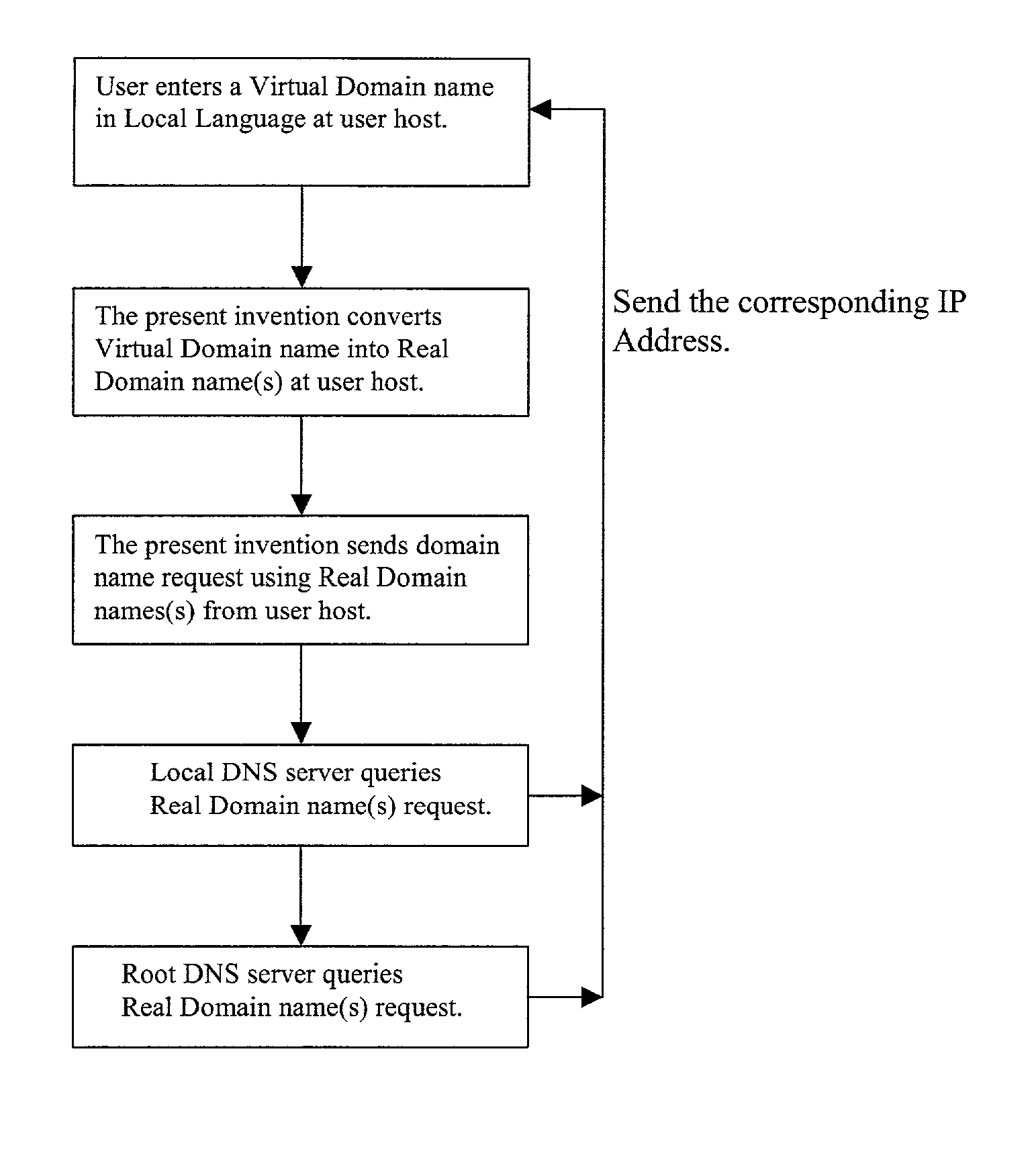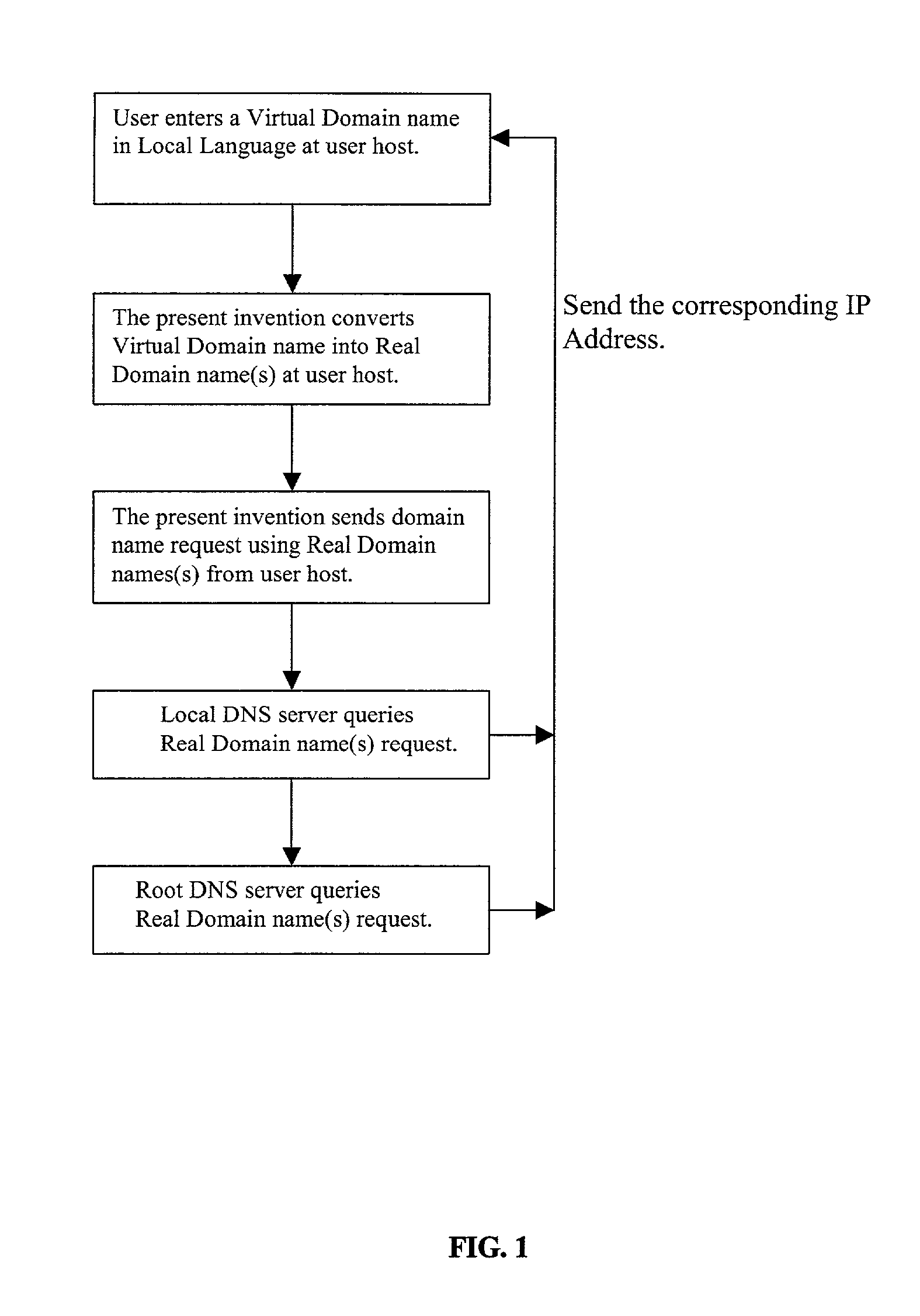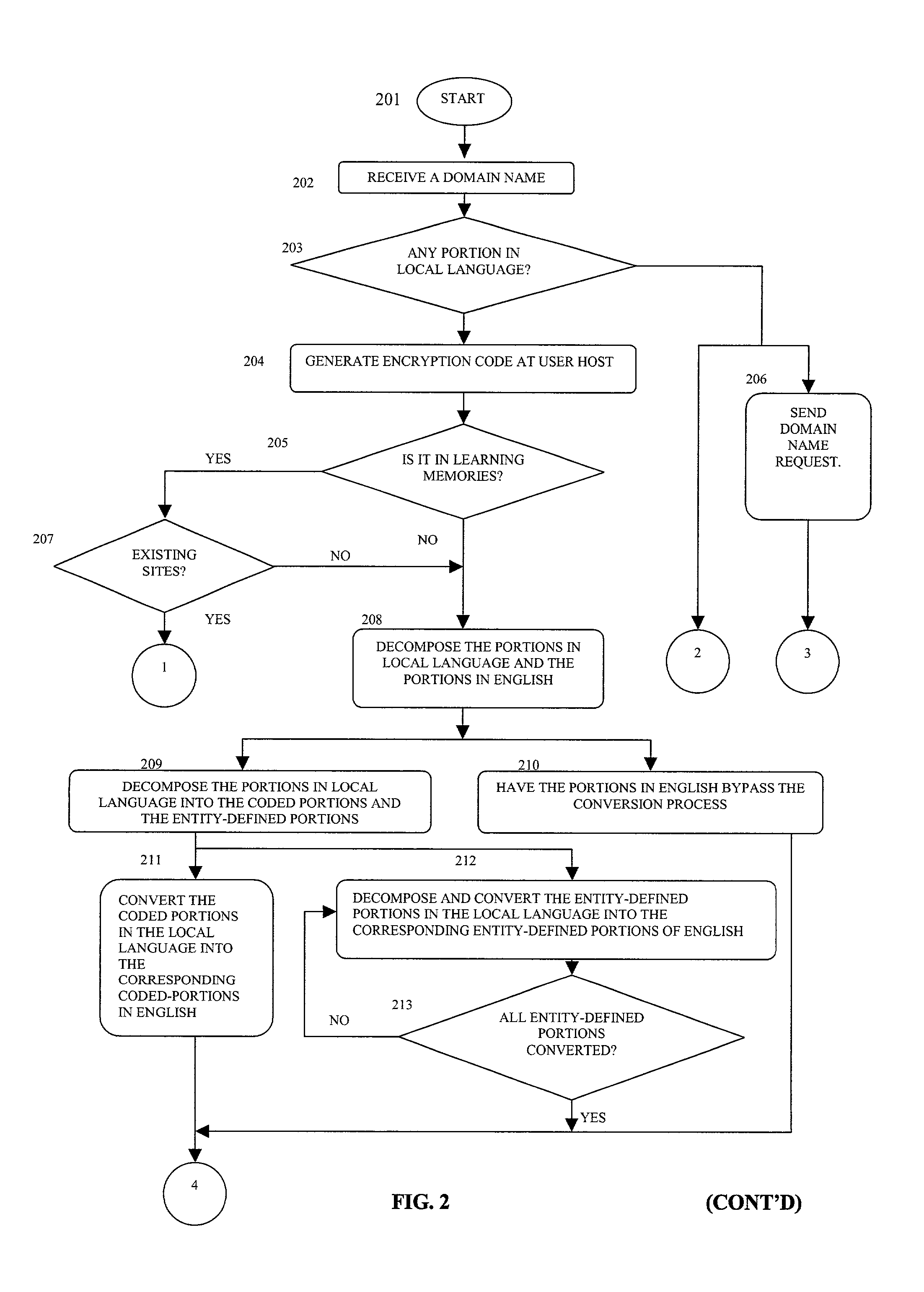Virtual domain name system using the user's preferred language for the internet
a virtual domain name and internet user technology, applied in the execution of user interfaces, instruments, computing models, etc., can solve the problems of reducing the international scope of the internet, burdening the dns, and cumbersome for those who do not understand english
- Summary
- Abstract
- Description
- Claims
- Application Information
AI Technical Summary
Benefits of technology
Problems solved by technology
Method used
Image
Examples
Embodiment Construction
of Figures
[0079] FIG. 1 shows the routing of domain name request and response in the DNS and a preferred arrangement of the present invention. First, the user enters a Virtual Domain name in Local Language at the user's host. Second, the present invention converts the Virtual Domain name into the corresponding Real Domain name(s) in English, which are fully compatible with the current DNS system. Third, the user host sends the converted Real Domain name(s) request to its local DNS server for the domain name(s) of the server host for which it needs the corresponding IP address. The local DNS server keeps track of domain names and the corresponding IP addresses of its designated group of hosts or clusters of hosts. Fourth, the local DNS server queries the domain name in its file. If the local DNS server recognizes the domain name in its file, it sends the corresponding IP address back to the user host. If not, the local DNS server passes the request on to the nearest root DNS server. ...
PUM
 Login to View More
Login to View More Abstract
Description
Claims
Application Information
 Login to View More
Login to View More - R&D
- Intellectual Property
- Life Sciences
- Materials
- Tech Scout
- Unparalleled Data Quality
- Higher Quality Content
- 60% Fewer Hallucinations
Browse by: Latest US Patents, China's latest patents, Technical Efficacy Thesaurus, Application Domain, Technology Topic, Popular Technical Reports.
© 2025 PatSnap. All rights reserved.Legal|Privacy policy|Modern Slavery Act Transparency Statement|Sitemap|About US| Contact US: help@patsnap.com



